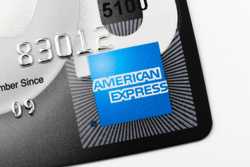Personal Finance
Our evaluations and opinions are not influenced by our advertising relationships, but we may earn a commission from our partners’ links. This content is created by TIME Stamped, under TIME’s direction and produced in accordance with TIME’s editorial guidelines and overseen by TIME’s editorial staff. Learn more about it.
The card_name and card_name are champions. They don’t fight in the same weight class as premium credit cards such as the card_name or the card_name — but among credit cards that serve their specific demographic, these cards lead the pack.
If you’re just beginning in the world of rewards credit cards, either of these cards are a great place to start. They charge no annual fee, so there’s no risk in giving them a try.
We’ll pit these two great cards against each other to help you decide which is best for your situation.
How the cards stack up
These two products are marketed as some of the best cash back credit cards, but they’re actually much more than that. As we’ll cover in a moment, you can turn the cash back you earn into travel rewards that can be worth potentially double or triple the value of cash.
In other words, whether you’re interested in earning cash back or travel rewards, either one can be a powerful tool in your financial utility belt.
Here’s a quick look at the most important aspects of each card to prepare you for our impending deep dive.
| Feature | card_name | card_name |
|---|---|---|
Welcome bonus | bonus_miles_full. | bonus_miles_full. |
Rewards |
|
|
Annual fee | annual_fees | annual_fees |
Intro APR | intro_apr_rate,intro_apr_duration and balance_transfer_rate for the first balance_transfer_duration_months (then reg_apr,reg_apr_type APR). | intro_apr_rate,intro_apr_duration (then reg_apr,reg_apr_type ). |
Foreign transaction fee | foreign_transaction_fee | foreign_transaction_fee |
Other benefits |
|
|
Welcome bonus
While the card_name offers an intro bonus with a higher potential payout, you’ll bonus_miles_full. Even if you’ve got the ability to achieve this, you’ll have to commit a lot of your spending to the card, potentially preventing you from:
- Putting your spending on other cards that might earn bonus rewards for specific purchases.
- Opening other credit cards to earn more welcome bonuses by meeting minimum spending requirements.
The card_name, though its bonus is a full $100 less valuable, only requires that you make $500 in purchases within the first three months of opening your account. It's far less intimidating spending requirement makes it the clear winner.
Winner: card_name
Rewards
Both the card_name and the card_name are advertised as earning cash back. However, with the right complementary travel credit cards, you can turn the rewards you earn with the cards into Chase Ultimate Rewards points and Capital One miles, respectively.
To do this, you’ll need to hold at least one credit card that earns these travel rewards. For example, if you have the card_name, you can convert the rewards you earn with the card_name to Chase points at a rate of 1 point per cent. Or, if you have the card_name, you can convert the rewards you earn with the card_name at a rate of one mile per cent.
Both of these travel rewards currencies transfer to varying airline and hotel partners. Take a look at each card’s list of partners to see which you may value more. All transfers are 1:1 unless otherwise specified.
| Chase Ultimate Rewards | Capital One miles |
|---|---|
Air Lingus | Aeromexico |
Air Canada Aeroplan | Air Canada Aeroplan |
British Airways | Accor (2:1 transfer ratio) |
Emirates | Avianca |
Flying Blue (KLM and Air France) | British Airways |
Hyatt | Cathay Pacific |
Iberia | Choice Hotels |
IHG Hotels | Emirates |
JetBlue | Etihad |
Marriott | EVA Air (2:1.5 transfer ratio) |
Singapore Airlines | Finnair |
Southwest | Flying Blue (KLM and Air France) |
United Airlines | Qantas |
Virgin Atlantic | Singapore Airlines |
TAP Portugal | |
Turkish Airlines | |
Virgin Red | |
Wyndham |
Winner: Tie
Annual fee
Both cards charge no annual fee, making this category a draw.
Winner: Tie
APR
Both cards offer identical intro APR terms. That’s an above-average interest-free window, making both cards excellent options if you are expecting a large upcoming expense that you don’t think you’ll be able to pay off for a long while.
Both cards have very similar variable APR rates that kick in after 15 months. This number should not concern you; if you pay your balances off each month, you won’t be charged interest. If you don’t think you’ll be able to routinely pay off your card each month, rewards credit cards are not for you. You could end up paying over 28% APR meaning you’re likely to completely negate the rewards you earn with these cards with the interest you incur.
Winner: Tie
Foreign transaction fee
Foreign transaction fees are an obnoxious charge you’ll get when spending overseas — or even making a purchase with a foreign merchant while still in the U.S.
The card_name waives these fees, while the card_name will charge you 3% of your transaction. This makes the card_name a far superior choice when traveling abroad.
Winner: card_name
Additional perks
These don’t have many additional overlapping ongoing benefits. The winner of this category will depend entirely on your preferences.
If you regularly travel domestically, you may prefer the card_name due to its rental car insurance and trip cancellation/interruption insurance — none of which is offered by the card_name. But if you regularly travel internationally, you’ll appreciate the card_name’s waived foreign transaction fees, saving you 3% on all international spending over the card_name.
If you rideshare with Lyft, you’ll prefer the card_name’s 5% earning rate for Lyft purchases. If you rideshare with Uber (or use Uber Eats with frequency), you’ll prefer the with Uber (or use Uber Eats with frequency), you’ll pref’s complimentary Uber One membership, valid for up to six months (offer ends November 14, 2024).
There is one area in which the card_name may pull slightly ahead for your situation: The card currently comes with three temporary offers:
- 3 free months of DoorDash DashPass membership (you must activate by December 31, 2024).
- 3 free months of Instacart+ membership (ends July 31, 2024) — and up to $10 per quarter in statement credits to reimburse you for Instacart purchases.
- $10 in monthly Gopuff credits when adding the card as your default payment method in the Gopuff app (ends December 31, 2023).
If you’ll use any of these peripheral benefits, the card_name is your winner.
Winner: card_name
Which card earns the most?
The card_name gives you the ability to earn the most rewards.
Both cards offer identical earning rates for two big categories: 5% back for hotels and rental cars booked through their respective travel portals, and 1.5% back for all other purchases.
But the card_name offers bonus rewards for purchases that the card_name does not. You’ll receive:
- 5% back on all travel booked through the Chase Travel Portal (not just hotels and rental cars).
- 5% back for Lyft purchases (through March 2025).
- 3% back for dining and drugstores purchases.
Dining and drugstore purchases are very common. Using the card_name as your daily driver can be a meaningful improvement over the card_name.
For example, if you were to spend an average of $300 per month on dining, you’d end the year with $108 in rewards from that spending category alone. With the card_name, you’d only receive $54 for the same amount of spending.
Our Take
Why we recommend the card_name
In nearly every way, the card_name outperforms the card_name, if only incrementally. It offers more bonus categories, better travel insurance and a slew of various monthly statement credits which can ultimately provide over $100 in value.
I personally also prefer Chase’s collection of transfer partners over Capital One’s transfer partners — and the card_name is one of the best Chase credit cards for earning these points.
Why You Would Still Opt for the card_name
If you’re looking for a credit card with a quick and easy bonus, you should absolutely choose the card_name over the card_name. Also, for anyone that prefers Uber over Lyft, you’ll do well with up to six months of free Uber One membership.
Bottom Line: More robust rewards vs. better welcome bonus
Both the card_name and the card_name serve similar audiences: Those who want to quickly accrue cash back and/or those who want to earn travel rewards. The card_name is the clear winner for ongoing earning rates and benefits — but the card_name provides a much more accessible welcome bonus.
Frequently asked questions (FAQs)
Is it worth upgrading the card_name?
The card_name can be upgraded to some of the best Capital One credit cards, such as the Capital One Venture Rewards Credit Card. If you’re able, it’s definitely worth upgrading your card — if your credit card goals involve travel.
Is card_name hard to get?
The card_name is comparatively easy to get. It’s a lower-tier credit card, and only requires that you have good credit — defined by FICO as a score of at least 670.
Can I prequalify for Chase credit cards?
Yes, Chase pre-qualifies customers for Chase credit cards. You can also check to see if you’re pre-approved here. Just note that neither prequalification nor preapproval guarantees that you’ll be approved for a Chase card. It simply indicates that you would be a good candidate.
The information presented here is created by TIME Stamped and overseen by TIME editorial staff. To learn more, see our About Us page.
Featured Articles

Business Platinum Card from American Express Review 2025
Learn more about the American Express Business Platinum Card, its many benefits, and who it’s right for.

Chase Freedom Unlimited vs. Citi Double Cash Card: Why You'll Earn More with Freedom
Both cards are without an annual fee and feature generous rewards programs. But Freedom Unlimited provides a competitive edge with its cash back welcome bonus.

British Airways Visa Signature® Card Review 2024
The British Airways Visa Signature® card features a lucrative bonus and valuable benefits, but it’s not perfect for everyone. Learn more.

